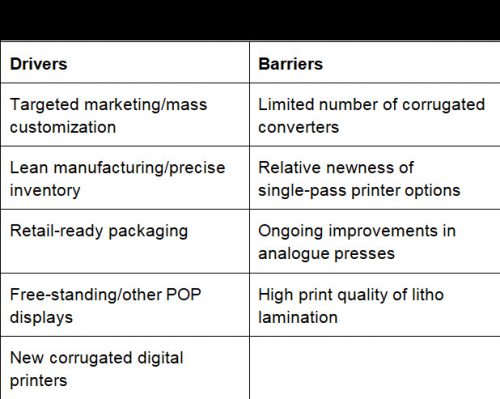Although some printing techniques dictate whether it is best to print on combined board, linerboard, or a separate sheet, other techniques work equally well on more than one material. The method used to apply the graphics to corrugated boxes or displays is determined by costs, scheduling, design/quality factors, and the printing process that will be used.
Corrugated digital inkjet printers can vary widely in terms of capability and price. The lowest volume devices are manually fed, but the highest volume systems are automated. There are two general printer categories: multi-pass and single-pass. Multi-pass printers have been serving the corrugated industry for more than 20 years, but they were mainly used to print prototypes until a few years ago. Starting in 2012, the most productive multi-pass printers have also focused on printing short production runs. Single-pass solutions started to become available in 2014, and these devices range from entry level to high speed.
Corrugated output is ultimately converted into packaging or displays. Packaging can be primary (e.g. for consumer electronics) or secondary (e.g. regular slotted cartons). Meanwhile, displays include free-standing containers and temporary/semi-permanent POP items.
Like all industries, the corrugated market has growth drivers as well as inhibitors. The key factors are outlined in Table 1.
Since the drivers outweigh the barriers, the corrugated market is currently experiencing healthy growth. There are a few key reasons the drivers are more influential than the barriers including:
• Due to the vast array of brands on a worldwide basis, short-run printing has become mandatory in many cases;
• Converters are becoming more skilled at digital print production and selling inkjet printing, so these offerings are seeing more widespread acceptance; and
• As digital vendors are improving their products and adding new ones all the time, the list of cost-effective applications is ever expanding.






